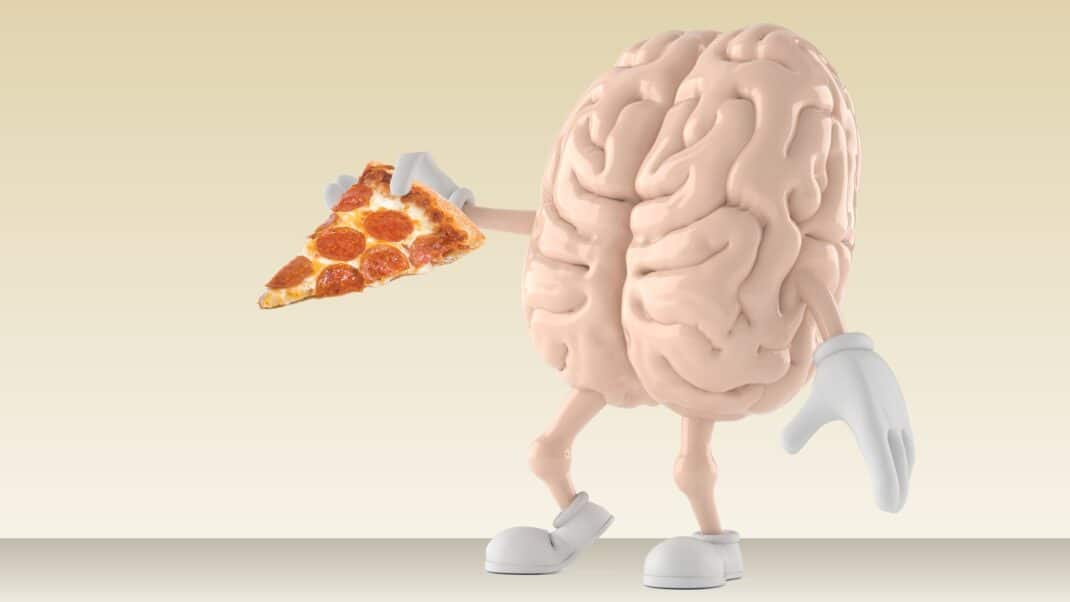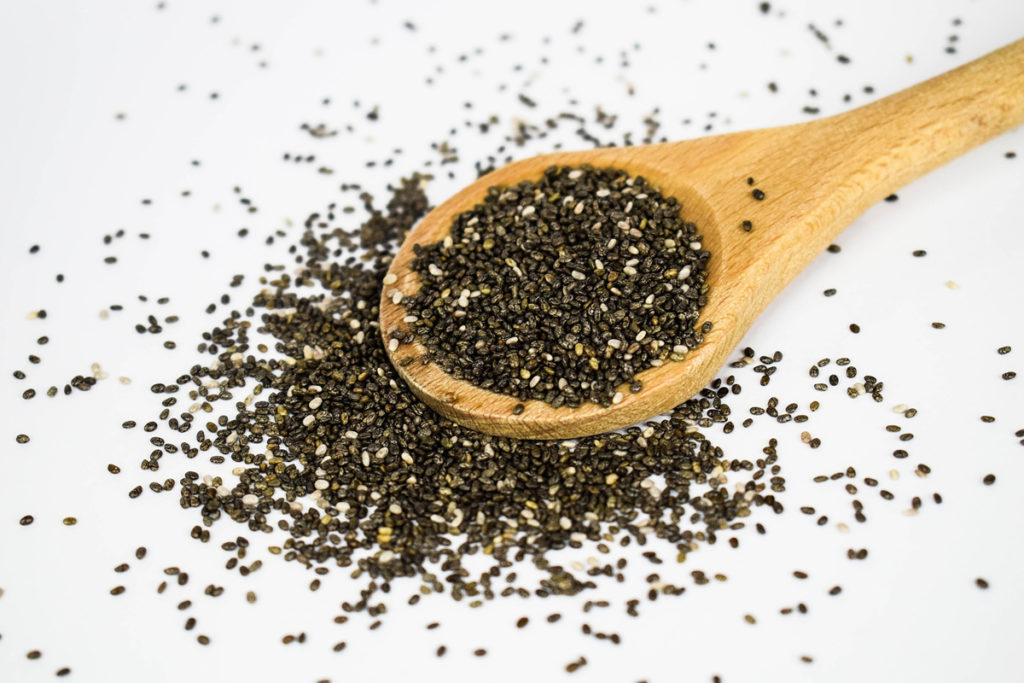Decoding and Dismissing Diet Culture: A Call to Action
What is a "diet culture" and why is it so bad for us? Read how to combat the toxic diet culture in our society.

We are fortunate, as health and exercise professionals, to be members of an industry that enjoys a dynamic existence. The landscape is constantly shifting, and we are consistently called to level up our services, our skills and our knowledge, by following the evidence. We follow the science and apply those evidence-based practices in our daily work with clients, students and colleagues.
However, there are—what I call—“slippery pseudoscience” concepts that we must combat. One such concept that has persisted through the ages, shaping our perceptions of wellness and body image is diet culture. Proponents of diet culture have embedded its messages deeply into the foundation of our society, dictating what we should eat, how we should look, and ultimately, how we should feel about ourselves. As health and exercise professionals, it’s imperative that we recognize the deceptive nature of diet culture and its detrimental effects on both physical and mental well-being.
The goal of this article is to decode the complexities of diet culture, shedding light on its pervasive influence and providing strategies to dismantle its harmful narratives. From unrealistic body standards to the glorification of restrictive eating, we’ll confront the myths perpetuated by diet culture and explore the profound impact they have on individuals’ health and self-esteem.
As health and exercise professionals, we have a responsibility to challenge and dismiss the diet culture mantra for our clients. Unlike individuals who are promoting harmful narratives, we are armed with knowledge and empathy; we have the power to shift the narrative away from weight-centric approaches towards holistic well-being. By fostering a culture of body positivity, intuitive eating, and self-compassion, we can empower our clients to cultivate a healthy relationship with food, exercise and their bodies.
In doing so, we can pave the way for a more inclusive, compassionate and sustainable approach to health and fitness. It’s time to redefine wellness on our own terms and embrace the beauty of diversity in all its forms.
Defining Diet Culture
The simplest way to define diet culture is as follows: a set of beliefs and/or practices that worship thinness and equates size with health or morality. Diet culture also tends to prioritize the pursuit of a specific body ideal as a primary indicator of health, beauty and self-worth. Further, this culture reflects (current) socially prescribed standards. As stated by Ragen Chastain, Ambassador for the National Eating Disorders Association (NEDA)(2019), “Diet culture is dangerous and harms people of all sizes…by perpetuating eating disorders and making a full recovery almost impossible.”
Shifting Standards – A Look Across History
When we examine beauty standards, and the messages that promote these standards, we discover two things. Firstly, there are no “standard standards” that exist consistently. Secondly, beauty standards are not accidental. Instead, they reflect existing power structures and cultural nuances in our society.
According to Dimitrov & Kroupouzos (2023), beauty standards fluctuate and have done so throughout history. In their work, they emphasize that beauty has been defined as everything from Venus of Willendorf (a full-figured female) to Egyptian women with slim waists, narrow hips, and glowing golden skin. This points to the fact that what is “ideal” or “perfect” or even “beautiful”, shifts not only with time, but with culture.
Beauty standards and “ideal bodies” even differ throughout various eras of art and sculpture. In the 1500-1600s, more body fat was a sign of wealth and health. We’ve seen women’s standards move from a Rubenesque style to curvy, then to hourglass, and then to supermodel-ultra thin bodies. Now, there’s an emphasis on “ripped” physiques.
This is not to say that shifting standards don’t also apply to men. For example, in the 1960s and 1970s, a thinner physique for men was glamorized—which can be seen in kids’ action figures like G.I. Joe. Now, these figures are more muscular and “powerful”.
According to the Body Positive Alliance (2023), “beauty is an oppressive power structure that disproportionately harms marginalized communities.” As we already know, beauty is inextricably linked to individuals’ perceptions of health, power and success. An article published in the AMA Journal of Ethics bravely noted that body image tyranny needs to end. “We must re-evaluate how we see, treat, and think of our bodies. History helps expose ideals of women’s beauty as arbitrary, which suggests the fluidity and subjectivity of the very notion of perfection” (Ngo, 2019).
All this to say, do we have another epidemic to address? One that is related to body dysmorphia and polarizing diet messages. If so, how do we do this as a collective body of health and exercise professionals? Not only for our clients, but for ourselves. Perhaps the place to begin is with the messaging, by dismissing and debunking the dysfunctional underpinnings of diet culture.
Consequences of Diet Culture
Diet culture perpetuates the existing standards of beauty through various mechanisms that influence individuals’ perceptions of themselves and others. Diet culture promotes thinness as the ideal, it’s harmful messaging normalizes disordered eating practices (and even reinforces them), encourages overly restrictive behaviors, and connects morality with food choices. It’s also a profit-driven industry, which is important to remain mindful of.
NEDA (n.d.) specifically identifies six overarching consequences of diet culture messaging.
- Conflates size and health, pathologizing some body sizes.
- Encourages following external rules about what, when and how much to eat.
- Suggests that people are more or less good/moral/worthy based on their body size.
- Creates thin privilege which makes thinness a gatekeeper for things like jobs, benefits, comfort and accommodation.
- Suggests movement as punishment for—or prevention of—being larger, rather than for joy or personal goals.
- Views people in larger bodies as less valuable and emphasizes that the goal of being thin is worth the risk of losing their lives.
Statistically speaking, the numbers and facts are alarming. The National Association of Anorexia Nervosa and Associated Disorders (ANAD) provides the following U.S.-based statistics (ANAD 2024):
- Eating disorders affect at least 9% of the population worldwide.
- 9% of the US population, or 28.8 million, will have an eating disorder in their lifetime.
- Less than 6% of people with eating disorders are medically diagnosed as “underweight”.
- Eating disorders are among the deadliest mental illnesses, second only to opioid use.
- An estimated 10,200 deaths each year are the direct result of an eating disorder— that’s one death every 52 minutes.
- About 26% of people with eating disorders attempt suicide.
- The economic cost of eating disorders is $64.7 billion each year.
- 42% of girls in grades first through third want to be thinner or change something about their bodies.
- By the age of 10, 81% of girls have a fear of being “fat”.
- More than half of middle school-aged girls and boys are engaging in unhealthy weight control behaviors.
It’s time to call out the primary issues associated with this culture. Megan Hansen, RDN and author of the book Metabolism Makeover, says: “The fundamental problem with diet culture is the focus on the physical body. The first thought we have when we want to lose weight is “how do I make myself smaller?” And the answer to that is always somewhere along the lines of ‘eat less, exercise more, eat this, don’t eat that’. One of the biggest contributors to diet culture and negative body image is the media” (M. Hansen, personal communication, May 17, 2023).
Jacquelyn Ekern, MS, founder of Eating Disorder Hope, agrees. She notes the primary contributors to negative body image are media, early childhood experiences, trauma or abuse, and comments from others (i.e., you look like you’ve lost weight or gained weight, etc.)(Ekern 2012).
If we take a deeper look into the contributions of media—specifically social media—literature highlights what is referred to as #fitspiration. The #fitspiration/influencer content is perceived (by those who consume it) as setting the “ideal” representation of health and fitness (Raggatt et al. 2018; Webster 2023). Consumers of this content then adopt the belief and mantra that “If I use the images for goal setting. I could look like her.” As qualified health and exercise professionals, we know how misguided that belief is. For example, we can have two very similar clients (e.g. of the same demographic, same size, same fitness level, etc.) follow the same program and yet experience tremendously different results.
The American Psychological Association (APA) (2023) shared a powerful message: “Social media can expose users to hundreds or even thousands of images and photos every day, including those of celebrities and fashion or fitness models, which we know leads to an internalization of beauty ideals that are unattainable for almost everyone, resulting in greater dissatisfaction with body weight and shape.” Curtis and colleagues (2023) further emphasize that while there are credible fitspiration accounts, many others contain objectifying messages or promote unhealthy or unrealistic body types.
Unsurprisingly, research also suggests that exposure to this type of content can result in increased body dissatisfaction (Deighton-Smith & Bell 2018; Holland & Tigemann 2016). Other researchers note that although this type of content is largely aimed at women and is often driven by female celebrities and fitness models, it also has serious consequences for men (Carrotte Vella & Lim 2015).
This prompts us to ask: How does this type of content affect us as professionals in the field? Are we susceptible to the comparison trap and influenced, even minimally, by the harmful messages of diet culture? Within the IDEA Fitness Journal, author Amanda Vogel posed a sobering question (Vogel 2018): Does the fitness industry have a body image problem? The answer: Yes.
Her research revealed that professionals in this industry are subjected to pressures from inside and outside the industry. These pressures come from traditional marketing and media, expectations from managers, competition with colleagues, and the demands we place on ourselves—likely due to the “not enough” impostor syndrome.
Impostor syndrome is a psychological pattern where individuals doubt their accomplishments and have a persistent fear of being exposed as a fraud, despite evidence of their competence. They often attribute their success to luck or other external factors rather than their own abilities, leading to feelings of inadequacy and self-doubt.
Lastly, social media was found to be a significant contributor to our industry’s body image problem. The images portrayed by fitness influencers—and other size or weight-centric content—imply that we, as the real professionals in the field, need to look a certain way. This simply isn’t true (Vogel 2018).
Shifting the narrative of diet culture isn’t just about our clients—it’s about us, and as a result, that shift must start with us.
Common Threads of Diet Culture Messaging
To combat the negative messages we and our clients are exposed to, we have to first understand the common threads of the messaging. This understanding provides a roadmap we can share with clients to help them identify the messages they are seeing.
The most common threads—identified as ‘red flags’—of diet culture messaging (and images) have these hallmark characteristics:
- A weight-centric or size-centric focus
- Promotion of restrictive (eliminating food groups) and/or disordered eating
- Include external validation and social acceptance based on appearance
- Demonstrate unrealistic beauty standards
- Attach a moral value to food (good vs. bad)
- A focus on exercise as a means of “burning it off” or “earning food”
- A belief that weight loss is a personal responsibility
- Short-term fixes, fast results, and no real behavior change strategies or interventions
- Buzzwords (“cleanse”, “detox”, etc.)
- Before and after photo emphasis (represents a narrow definition of progress)
- Promotion of supplements to replace food sources
- Those who cannot lose weight lack willpower or discipline
Let’s pause a take a closer look at the last bullet point. It’s highlighted for a reason. Consumers are often told “you just need willpower”. However, willpower is mind-body response that is inherently limited. The more an individual must rely on this “muscle”, the more fatigued it becomes. As coaches, we need to help clients develop tools and strategies that allow them to conserve their willpower and plan for those situations that may threaten to derail their goals. Stated differently, they don’t lack willpower—they simply don’t have an endless pool to draw from.
Reframing Common Diet Culture Messages
As professionals, our biggest weapon is evidence-based information. We can use this to our advantage and to our clients’ advantage. Our focus should not be on eradicating diet culture because, like trying to develop the “perfect body”, it’s not attainable. Instead, let’s focus on educating our clients and ourselves to intentionally shut out the “noise of negative narratives”.
Let’s look at a few examples. No doubt, you may have been asked these types of questions by clients recently (or in the past).
Example #1: The Bread Battle
Client: “I think bread and carbs are my issue and they are stopping me from losing weight. How can I cut them out?”
Possible Pro Response: “I understand nutrition ‘advice’ is prolific, which can make it difficult to choose which direction to go. Can you tell me a little bit about what concerns you have about carbohydrate-based foods?”
Follow-up: “Is it okay with you if we spend some time talking about carbohydrates, what they do for us, and some sources of nutrient-dense options?”
Pro Strategies You Can Use to Debunk
First, ask your client what fears they have about carbohydrate-based foods. Explore the root source and cause of these concerns.
Teach clients about the role carbohydrates (and fiber) play in the body, and how they can fuel performance.
Help clients read to food labels, and to identify highly processed ingredients along with high fiber options.
Have a conversation about energy versus nutrients, and the important role each of these play in good health.
Example #2: Cauliflower Power
Client: “I saw this post on social media about cutting calories by using cauliflower as a substitute for other foods, like potatoes, rice and pizza crust. Should I be doing this?”
Possible Pro Response: “Cauliflower is an awesome source of fiber, nutrients such as vitamin C, as well as phytochemicals. It’s a great option to add to your diet. What intrigues you about trying this as a substitute?”
Pro Strategies You Can Use to Debunk
Validate that cauliflower provides supportive nutrients.
Encourage clients to try recipes and offer to share any you have tried.
Revisit the role carbohydrates play in the body and in performance gains.
Consider having a conversation about the health-halo effect, which means that not every product that is made with cauliflower (or other “healthful” ingredient) is a reasonable (or healthy) option.
If clients try a recipe and don’t enjoy it, reinforce that their experience is okay. Further, note that it may be more beneficial for them to use the original recipe and include a whole-grain source.
Example #3: Clean vs. Dirty Foods
Client: “I have been seeing a lot of information about eating clean, and how that can lead to better health outcomes and weight loss. How do I know if I’m eating clean?”
Possible Pro Response: “This is a great question. Thank you for chatting with me about it. Let’s first talk about what you feel clean eating looks and feels like?”
Pro Strategies You Can Use to Debunk
Explore what “clean eating” means to the client.
Adding fruits and veggies? Reducing caffeine intake? Etc.
Help clients define what healthy means to them.
Introduce language that doesn’t categorize food as good or bad, or clean or dirty.
Colorful, bright, sweet, decadent, etc.
Help clients focus on what they can add to their nutrition, versus what they need to restrict.
Shifting the Narrative: Action Steps for Pros
Pushing back against diet culture seems like a heavy lift; it’s loud and pervasive and persistent. However, if we are willing, as a body of professionals, to create momentum around this effort, engage in the conversation, call out the dogmatic nature of diet culture, and work intentionally to support clients in speaking back against those messages, imagine what can happen.
You might be asking, what can I do? Or, what can my facility do? Here are a few impactful steps you can take.
- Stay current on the trends and dive into the body of literature on this topic (as you’re doing right now!).
- Strengthen your network and join forces with other professionals.
- Speak up! Call out the unsafe practices and message misalignment.
- Engage in this important conversation— starting now: at conferences you attend (the 2024 IDEA® World, perhaps), write about, speak about it, push back.
Our power is in our approach—our evidence-based practices. We prioritize teaching clients to utilize evidence-based information when navigating their health choices. We actively engage them in conversations to explore their interests in specific diets, or advice, they’ve encountered. By meeting clients where they are and providing empathetic, nonjudgmental support, we foster an environment conducive to growth. Our aim is to empower clients to ask nuanced questions—steering away from simplistic notions of good or bad foods. As we engage with our clients and colleagues, it’s essential to remain vigilant and observe how we can take strides to address and challenge the influences of diet culture.
Want to learn more? What Is Your Gut Telling You About Your Nutrition?https://www.ideafit.com/nutrition/what-is-your-gut-telling-you-about-your-nutrition/
Useful and Fun Extras
Decoding Diet Culture – 2 Series Podcast (Myself and Dr. Darian Parker). open.spotify.com/show/6jS7VWysxL4wFNRpFNykwp
Hansen, M. 2023. Metabolism Makeover. Ditch the diet, train your brain, drop the weight for good. Flashpoint: Seattle.
National Alliance for Eating Disorders. allianceforeatingdisorders.com
Quittkat, H. L., et al. 2019. Body Dissatisfaction, Importance of Appearance, and Body Appreciation in Men and Women Over the Lifespan. Frontiers in psychiatry, 10, 864. doi.org/10.3389/fpsyt.2019.00864
Rethinking Wellness Podcast. open.spotify.com/show/5sqFLGghRgPwRRxiWM23gt
Author Bio:
Erin Nitschke, EdD, ACE-CPT, NFPT-CPT, NSCA-CPT, ACE Health Coach, Fitness Nutrition Specialist, Therapeutic Exercise Specialist, and Pn1 is a health and human performance college professor, fitness writer, mother, and passionate fitness professional. She has been in the health and exercise industry since 2003. Erin believes in the power of a holistic approach to healthy living. She loves encouraging her clients and students to develop body harmony by teaching focused skill development and lifestyle balance. Erin serves as a subject matter expert and content creator for ACE. Erin is also an editorial author for IDEA, NFPT, Fitness Education Online, and Ate.com, where she writes on topics related to personal training, health coaching, behavior change, and career success. She lives in Wyoming and serves as the Program Director of Sciences at Laramie County Community College. Email her at allaboutthatbalance@gmail.com.
References
Resources and Interesting Reads
ANAD (National Association of Anorexia Nervosa and Associated Disorders). (n.d.). Accessed March 25, 2024: anad.org/eating-disorder-statistic/
APA (American Psychological Association). 2023. Reducing social media use significantly improves body image in teens, young adults. Accessed March 25, 2024: apa.org/news/press/releases/2023/02/social-media-body-image
Body Positive Alliance. (n.d.). American beauty ideals throughout the decades. Body Positive Alliance. Accessed March 21, 2024: bodypositivealliance.org/blog/american-beauty-ideals-throughout-the-decades
Carrotte, E.R., Vella, A.M., & Lim, M.S.C. 2015. Predictors of “liking” three types of health and fitness-related content on social media: A cross-sectional study. Journal of Medical Internet Research, 17 (8), 205.
Chastain, R. 2019. Recognizing and resisting diet culture. National Eating Disorders Association. Accessed March 25, 2024: nationaleatingdisorders.org/recognizing-and-resisting-diet-culture/
Curtis, R.G., et al. 2023. Hashtag fitspiration: Credibility screening and content analysis of Instagram fitness accounts. BMC Public Health 23, 421. doi.org/10.1186/s12889-023-15232-7
Deighton-Smith, N. & Bell, B.T. 2018. Objectifying fitness: A content and thematic analysis of #fitspiration images on social media. Psychology of Popular Media Culture, 7 (4), 467–483.
Dimitrov, D., & Kroumpouzos, G. 2023. Beauty perception: A historical and contemporary review. Clinics in Dermatology, 41 (1), 33-40. doi.org/10.1016/j.clindermatol.2023.02.006
Ekern, J. 2012. Weight and body image disorders: Causes, symptoms & signs. Eating Disorder Hope. Accessed March 30, 2024: eatingdisorderhope.com/information/body-image
Holland & Tigemann 2016. A systematic review of the impact of the use of social networking sites on body image and disordered eating outcomes. Body Image, 17, 100-110. doi.org/10.1016/j.bodyim.2016.02.008
National Eating Disorders Association (NEDA). (n.d.). Accessed March 30, 2024: nationaleatingdisorders.org
Ngo, N. 2019. What historical ideals of women’s shapes teach us about women’s self-perception and body decisions today. AMA Journal of Ethics. journalofethics.ama-assn.org/article/what-historical-ideals-womens-shapes-teach-us-about-womens-self-perception-and-body-decisions-today/2019-10
Raggatt, M. et al. 2018. “I aspire to look and feel healthy like the posts convey”: Engagement with fitness inspiration on social media and perceptions of its influence on health and wellbeing. BMC Public Health, 18, 1002.
Schilling, L.P. 2018. Disorder in disguise: Recognizing the need for change when common diet trends cause harm. ACSM’s Health & Fitness Journal, 22 (5), 34-39
Vogel, A. 2018. Does the fitness industry have a body image problem? IDEA Fitness Journal. Accessed March 30, 2024: www.ideafit.com/uncategorized/a-body-image-problem-in-the-fitness-industry/
Webster, S.T. 2023. Toward Evidence-based fitspiration. IDEA Fitness Journal. Accessed March 30, 2024: www.ideafit.com/health-coaching/toward-evidence-based-fitspiration/?fbclid=IwAR2mrwEZE0ZJz_kCGBBGPezLkR2QzCEKPfFvUpokXAu_dv_eg8aXmX2MdrI
Erin Nitschke, MS, EdD
Professionally, I served as the Director of Health and Human Performance for a near decade at Sheridan College in Sheridan, Wyoming. I instructed courses in exercise science, physical education, and personal training. I am a writer, a fitness blogger, & higher education instructor for Laramie County Community College, Western Wyoming Community College, Northwest Community College, and the University of Wyoming. I have over 14 years of experience in personal training as well as adult education and instructional design. I believe in the power of a holistic approach to healthy living. Living an active and healthy lifestyle is not defined or limited by physical stamina, muscle size, or outward appearance. An active and healthy lifestyle is multifaceted and requires commitment and balance in all aspects of personal wellness. Being fit means finding an equilibrium between the physical, social, intellectual, environmental, occupational, and spiritual dimensions of personal well-being. I am personally and professi






